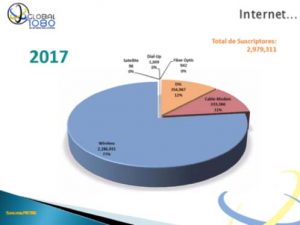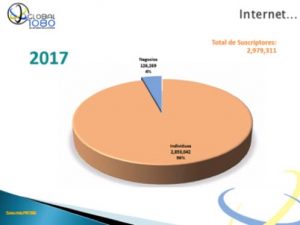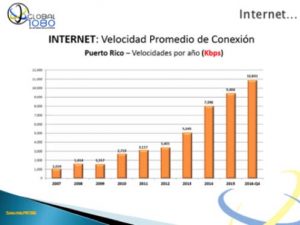Op-Ed: Mobile killed the fixed line star!


Author Raúl Burgos is a business executive with more than 30 years of diverse business and leadership experience throughout the U.S. and Latin America.
To many of my generation, MTV became the surrogate to our stereo system and it pointed the direction into the evolution of how we listened and enjoyed music. So, if you remember that early MTV standard, “Video Killed the Radio Star!” then this story is somewhat similar…
Yesterday’s Op-Ed on telecommunications, titled: “Mobile doesn’t replace a fixed line connection,” took me down memory lane to some of the discussions and arguments I heard as an early 90’s telecom rookie.
What will happen to the wireless phone? Can the cellular phone replace the fixed phone? You see, there was no smartphone yet and digital technology was not even deployed. In essence, all phones and some executives were still “dumb,” with the answer to the cellular phone’s future, not clear.
Today, the answer is obvious…
For the last 25 years, the wireless telecom industry has been my career and some would say my passion. I have witnessed its evolution, its mistakes, its victories, but most of all its impact at a global scale.
Here in Puerto Rico we went from just having three service providers in 1999 to five service providers and a myriad of MVNO’s in 2017. It gave us more choices, better quality, faster data speeds, higher reliability, latest technology and lower prices. We now have expanded competition, better technology, newer service and a savvier customer.
To balance yesterday’s story, it is important to mention that greater internet penetration, faster speeds and better value have been the results of a vibrant, strong and continuously evolving wireless telecom industry that for the last decade has increasingly invested in the latest technology and data services. A faster pace for technological evolution and diffusion took off and we never looked back.
The wireless industry investment and commercial strategies has paid off on acquisition, speed, capacity and quality in services. Puerto Rico has close to 2.9 million internet users, with 77 percent of that user base being mobile. The fast growth in internet penetration during the last four years came as a result of those aggressive and customer-centric actions on the part of the wireless telecom industry — to no other goes the merit.
 For the average consumer, the “value-benefit link” offered by mobile companies is significantly greater than the one offered by traditional broadband operators. The benefits of mobility, greater reliability, faster speeds, greater data allocations (mobile companies speak in GB not in MB,) roaming and hotspot capabilities are significant.
For the average consumer, the “value-benefit link” offered by mobile companies is significantly greater than the one offered by traditional broadband operators. The benefits of mobility, greater reliability, faster speeds, greater data allocations (mobile companies speak in GB not in MB,) roaming and hotspot capabilities are significant.
When it comes to cost, unless you define a specific need for a fixed broadband connection or have a more commercial need with some specific service level requirements, mobile is a significantly better buy for the average consumer.
In Puerto Rico, 96 percent of users fall into the individual consumer category. As for reliability and usability, data shows that as of EOY 2016, 52 percent of all video viewing came through a mobile device.
Many also use their wireless service hotspot in lieu of broadband services during blackouts and service drops; it so happens that I am one of those.
 As for the concept of “throttling” or lowering your speed after a certain level of use, this is something that each user needs to evaluate based on their usage needs and patterns. Most consumers serve their needs in an adequate manner; stats show that 80 percent of users subscribe to plans that offer 5Mbps or less, an amount manageable by all carriers and that comes with very accessible pricing in the local market.
As for the concept of “throttling” or lowering your speed after a certain level of use, this is something that each user needs to evaluate based on their usage needs and patterns. Most consumers serve their needs in an adequate manner; stats show that 80 percent of users subscribe to plans that offer 5Mbps or less, an amount manageable by all carriers and that comes with very accessible pricing in the local market.
With most national carriers throttling your services after a consumption that ranges between 22GB-28GB, this may be a non-issue in the end.
As of EOY 2016, internet speeds in Puerto Rico averaged about 10.8Mbps, and although still behind U.S. mainland speeds of 16.3Mbps, this was a significant jump from 2012’s 3.4Mbps.
 Once again, this significant improvement was spurred by the “consumer centric” actions of the wireless telecom industry. Another example that in an aggressive competitive environment, the customers always win…
Once again, this significant improvement was spurred by the “consumer centric” actions of the wireless telecom industry. Another example that in an aggressive competitive environment, the customers always win…
In the end, we cannot deny the positive evolution of the telecom industry as a whole during the last five years and its positive impact on the island’s consumer and business segments.
All of the telecom alternatives available on the island have “pluses and minuses” and all the consumer segments must clearly define their needs, applicability, budget and expectations.
 I would not discount any of the services offered and operators on the island; just do the research, find your fit and remember that old technology axiom, “today is yesterday and tomorrow is today.”
I would not discount any of the services offered and operators on the island; just do the research, find your fit and remember that old technology axiom, “today is yesterday and tomorrow is today.”
Of the 4 million telephone lines in Puerto Rico, 3.2 million are wireless, which when combined with 80 percent of all internet access coming through mobile devices, the answer becomes obvious,
Mobile did replace the fixed line connection…







